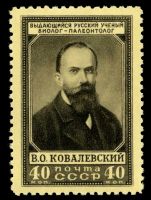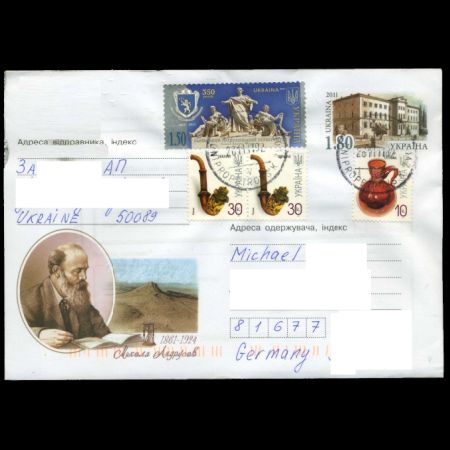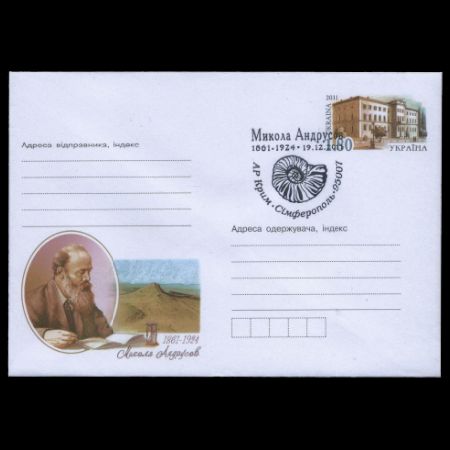Ukraine 2011
"Andrusov Nikolay Ivanovich geologist and paleontologist"
| Issue Date |
11.11.2011 |
| ID |
Michel: Scott: Stanley Gibbons:
Yvert: Category: pP |
| Designer |
Georgij Varkach |
| Covers in set |
1 |
| Value |
UAH 1,80 |
| Printed by |
The Polygraph Combine Ukraina |
| Quantity |
360,000 |
| Issuing Authority |
Ukrposhta |
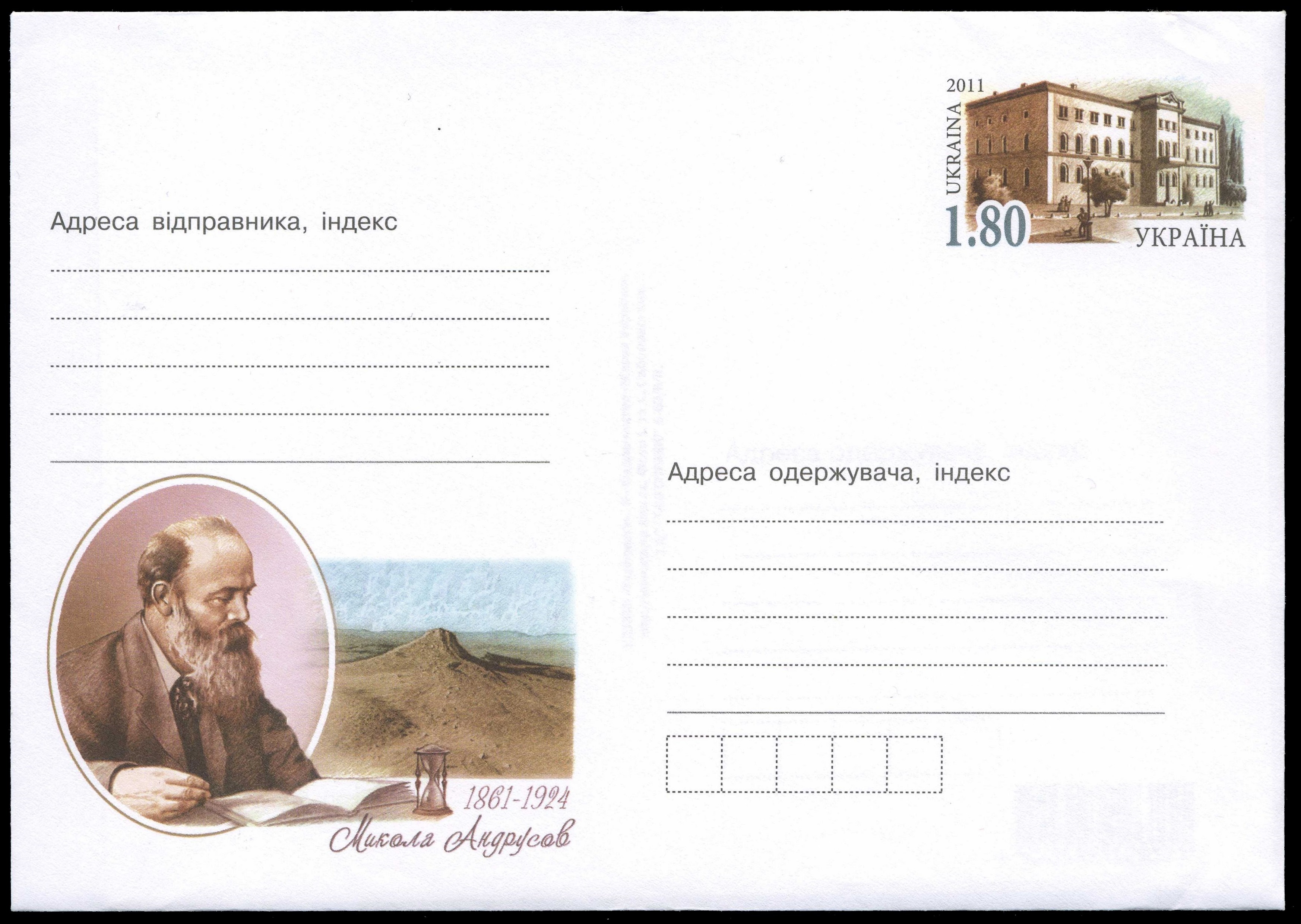
Andrusov Nikolay Ivanovich (1861 - 1924) was a Russian geologist,
stratigrapher, and palaeontologist.
He was born in Odessa, then a part of Russia.
He studied geology and zoology at the Novorossia University in Odessa.
He then traveled across Russia and central Europe to collect fossil specimens.
The Challenger expeditio n of 18721876 studied processes of the sea floor.
In 1889 Andrusov published a review of this expedition in the Mining Journal.
He would later perform studies of the geology and sediments of the Caspian Sea and the Black Sea.
In 1890-91 he participated in a deep water expedition to the Black Sea by the
Russian Geographical Society.
This expedition discovered hydrogen sulfide in the lower portions of this lake.
Andrusov was the first to propose that this substance was created by biological decomposition of
life forms (bacteria) containing sulfurous compounds.
Building of the Odessa University is depicting on preprinted stamp.
The University, as is known, for many years were a unique centre of science in the South of Russia.
The outstanding contributors to geology, stratigraphy, hydrogeology and paleontology worked there.
V.D. Lascarev, I.V. Sintsov and others generated regional collections of the University paleonthological museum.
Further exposition was replenished by means of new discoveries of ancient burials in Odessa, found in underground hollows.
In a 1928 in Odessa catacombs karst caves were found out, where in alluvium there remained the whole accumulation of residuals.
Over forty spices of animals are described here. In the fossil structure were a late pliocene camel, a
tiger, hyenas, other predators, rodents, birds, including ostrich, a mastodon etc.
The scheduled excavation in the karst caves of Odessa was begun in 1935.
The scientific principal of the expedition was D.K. Tretyakov.
Odessky paleontological museum is one of the oldest in Ukraine.
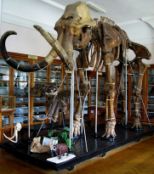
Mammoth skeleton from colelction of Odessky paleontological museum
|
In 1865, simultaneously with the establishment of Novorossiysk
University, geological study was op ened, which had the paleontological
collection of 318 items.
In 1873, a prominent zoologist and paleontologist V.O.Kovalevsky presented the first large collection of
fossils of freshwater mussels of southern France.
Since then, the paleontological museum has existed as an independent unit.
The Paleontological Museum belongs to the ten best paleontological museums in the world.
The museum contains a rich collection of regional fossils collected in the South East European Platform (Ukraine and Moldova),
and unique collection of fossil fauna and flora.
Exhibit Museum of Paleontology are located in three halls of the total area of 500 sq.m.
The museum's collections comprise more than 60 thousand exhibits.
Library Museum has over 10,000 titles, most of whom are founders of paleontology and geology.
It's alos contain unique monographic collection of great scientists geologists I.F.Sintsova, N.I.Andrusova,
V.D.Laskareva and others.
The most important collections in the museum are seven complete skeletons of vertebrate animals that lived in the region.
This mastodon skeletons, three-toed horses, hornless rhinoceros, Pliocene camel, elephant, cave bear, mammoth.
The exhibition includes paleontological museum diorama, "The evolution of life on Earth."
Fifteen sections dioramas consistently show the main stages of the planet and life on it.
Each step is illustrated by typical forms of fossil organisms, paleogeographic schemes, which
represent the position of land and sea. Most valuable are the skeletons of mosasaurs,
ichthyosaur, a complete skeleton of a sea lily, and a
unique skeleton dinornisa.
The museum has very big undeground reserve - burial place of many extinct vertebrates which occupy an entire floor
of paleontological museum.
These fossils are represent mammals from karst caves Pontian limestone of Odessa.
The exhibition "Flora Odessa Catacombs" shows remains of camels, foxes, hyenas, mastodons, ground
squirrels, badgers, marabou, ostrich and other animals of Pliocene age.
References

